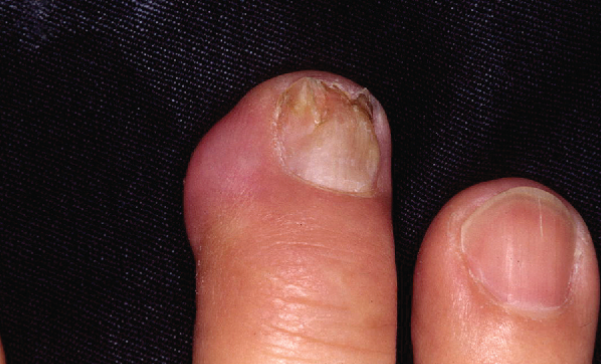Calcifying aponeurotic fibroma (juvenile aponeurotic fibroma) is a rare benign fibroblastic soft tissue tumor characterized by a single nodule on the palms or soles of children and adolescents. ICD-10 Code: M72.8
The disease has a peak incidence between 8 and 14 years of age; however, cases have been reported in neonates and older individuals up to 67 years of age, with a male to female ratio of 2:1.
Considered a rare pathology, its prevalence is underestimated due to the asymptomatic nature of the disease and lack of awareness among physicians. The etiology and pathogenesis are still unknown.
The disease has two phases.
In the first phase (infiltration), which is more common in children, the tumor presents as a painless, mobile nodule 1 to 3 cm in diameter, flesh-colored, moderately firm, and ill-defined. In this state, the tumor may persist for many years.
In the late stage (calcification), which is more common in adolescents and adults, the nodule becomes hard due to calcification with cartilage formation, less mobile due to infiltration into surrounding tissues (fascia, tendons, aponeuroses, and periosteum), and has well-defined borders. The overlying skin may be red.
The preferred sites for fibroma localization are the palms and soles, with less frequent occurrences on the fingers, wrists, elbows, knees, thighs, and chest. Multiple lesions are extremely rare. In most cases, the growth is asymptomatic; however, in the late stage, some patients experience local discomfort when wearing shoes. Malignant transformation of the tumor has been reported in a few cases.
- Palmar fibromatosis (Dupuytren's contracture)
- Diffuse infantile fibromatosis
- Fibroma of the tendon sheath
- Nodular fasciitis
- Infantile fibrosarcoma
- Soft tissue chondroma
- Myxoid chondrosarcoma
- Epithelioid sarcoma
- Synovial sarcoma
- Florid reactive periostitis (paraosteal fasciitis)
Treatment involves surgical excision of the tumor; however, the recurrence rate reaches 50%.

